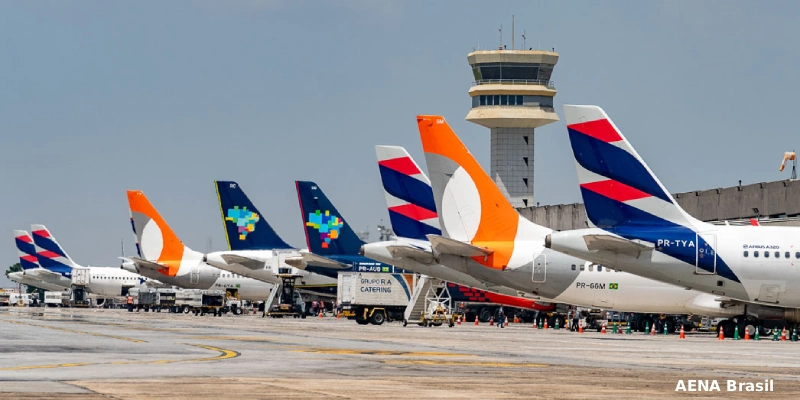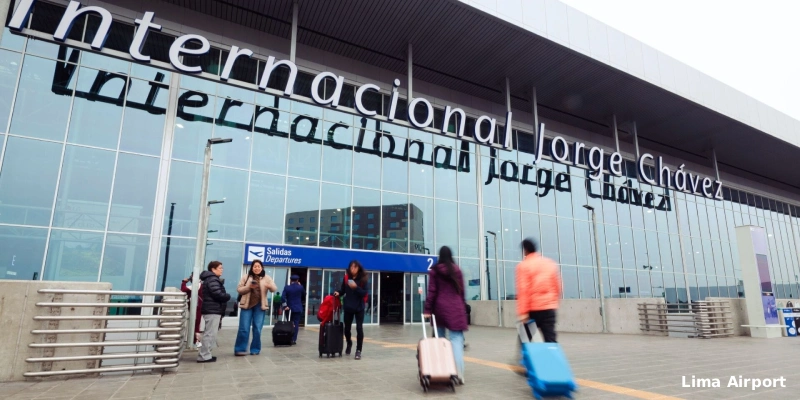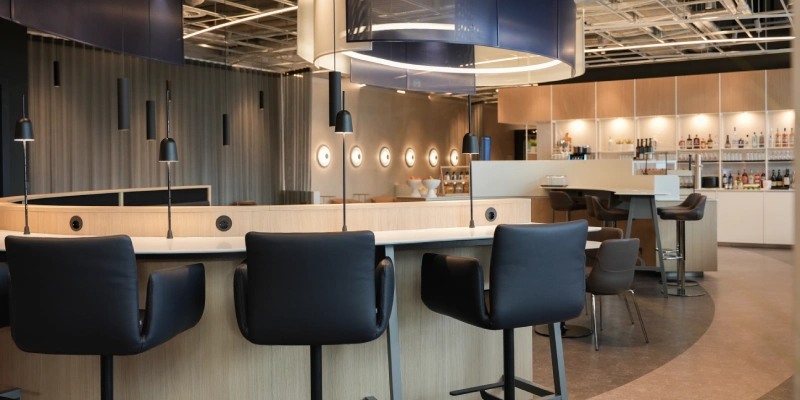Panamanian airline Copa Airlines shared Monday its 2024 growth and investment plans to maintain its leadership in the region of Panama’s air connectivity, offered by the Hub of the Americas located at Tocumen International Airport, as well as to increase its contribution to the economy, tourism and employment generation in the country.
“The international connectivity offered by Copa Airlines, greater than that offered from other hubs in the region, is a competitive advantage for Panama that highlights the impact and strategic relevance of the Hub of the Americas in the country’s economy. This unique connectivity is also an attraction for airlines from other regions of the world that complement their flights in our country. A better connected country translates into opportunities for everyone, which is why we invest in new aircraft to expand routes and frequencies that generate more jobs, more economic development and more tourism growth,” said Pedro Heilbron, CEO of Copa Airlines.
Strengthening Panama’s connectivity
By June 2024, through Copa Airlines’ route network, Panama will connect to 85 destinations in 32 countries in the Americas, with an average of more than 370 daily flights. In the first half of the year, the airline will add three new destinations: Tulum in Mexico, Florianopolis in Brazil and the Raleigh-Durham region in North Carolina, United States. This represents an opportunity to make Panama’s attractions known to more people in the continent, as well as an incentive for the country’s economic and tourism development.
With the new routes and increased flight frequency in current destinations, Copa Airlines expects to close 2024 with more than 17.5 million passengers transported, representing a 21% increase over 2019, surpassing the number prior to the pandemic.
→ Copa Holdings reports net income of $518.2 million in 2023
The increase in routes and flight frequencies is possible thanks to the annual investment of US$1.7 billion (at list price) to expand the fleet of Boeing 737 MAX aircraft. By the end of 2023, Copa Airlines will have 96 aircraft, and by the end of 2024 the fleet is expected to reach 107 and exceed 120 aircraft by 2025. The airline estimates that 70 additional jobs will be generated for each new aircraft added to its fleet.
Impact on tourism attraction
“Panama Stopover” will continue to be an important Copa Airlines initiative to encourage passengers to visit Panama while traveling through Tocumen International Airport. In 2023, this program brought more than 120,000 visitors, 17.9% more than in 2022. The airline also informed about its new promotional campaign for 2024, “Es Muy Panamá” – “It’s so Panamá”, which will promote the country’s tourist wonders, mainly in key markets in the United States, to continue generating more interest in travelers to visit Panama.
Additionally, through the “Panama Irresistible” fares, in 2023 there was a 14% increase in visitors to the country on Copa Airlines flights. This initiative offers promotional fares while contributing to the promotion and advertising of the country through the airline’s social media platforms, copa.com, and the company’s own advertising spaces such as the in-flight magazine Panorama.
In 2023, according to information from the Tourism Promotion Fund (PROMTUR) and the Panama Tourism Authority (ATP), 1.6 million visitors to Panama by air are expected to arrive, 17.7% more than in 2022. The airline estimates that approximately 60% of these arrived through Copa Airlines flights.
Impact on Panamanian economy
Copa’s growth allows for a greater direct contribution to the economy. In 2023, Copa Airlines’ activity generated close to US$1.5 billion in contributions to the Treasury, payments to government institutions, payroll, local suppliers, among others. By the end of 2024, that contribution is expected to exceed $1.6 billion.
Additionally, the airline’s growth will continue to positively benefit the production and progress of local businesses by bringing more products on board for the enjoyment of the millions of passengers traveling on Copa throughout the continent. Currently, small Panamanian companies such as Café Rogusta, Comercializadora Nico, Finca El Viejito, Zakuska and Oro Moreno Panama, are some of the small and medium-sized companies providing 100% Panamanian-made products that are part of the airline’s in-flight service.
Impact on employment generation
In 2024, Copa Airlines plans to continue to be one of the largest generators of private sector employment in Panama. For this year, the airline expects to generate more than 630 new jobs and by the end of the year to have more than 7,700 employees in Panama, surpassing the size it had in 2019. By 2025, the airline’s number of employees in Panama should exceed 8,200 people.
In order to meet the demand for skilled labor and generate professional growth opportunities for young Panamanians, Copa Airlines continues to promote the Academia Latinoamericana de Aviación Superior (ALAS), a non-profit institution, partly subsidized by Copa Airlines, dedicated to training young Panamanians to become commercial pilots. Since its founding to date, it has graduated more than 233 commercial pilots, who today are part of the airline’s pilot staff. It currently has 84 active students and plans to graduate 61 new pilots by the end of 2024.
To generate opportunities for aviation mechanics, Copa continues to promote the Academy of Aeronautical Technicians (ATA), which aims to train highly qualified personnel in maintenance and inspection of aeronautical systems, under local and international quality standards. Since its founding, ATA has graduated 134 aviation mechanics and 86 students are currently pursuing their studies. This non-profit program recruits young people from Panamanian technical and vocational schools, offering training at no cost to the student and with a monthly scholarship of US$350 while they complete their studies.
The Copa Airlines Cabin Crew Academy expects to graduate 360 cabin crew members by 2024. Through this program, young Panamanians receive a 100% free certification that meets the international standards required by the industry. This allows them to acquire tools for onboard care, emergency management, cabin preparation, languages, as well as to get started in the world of aviation and build their career and professional advancement within the airline.
Related Topics
Congonhas Airport in São Paulo Receives Approval to Operate International Flights
ALTA Warns that Transfer TUUA Puts Peru’s Air Connectivity at Risk
Panama: Tocumen Airport Surpasses 19 Million Passengers by November, Cementing Its Regional Leadership in 2025
Lufthansa Reopens Its Lounge at Stuttgart Airport After Comprehensive Renovation

Un apasionado por la aviación, Fundador y CEO de Aviación al Día.




